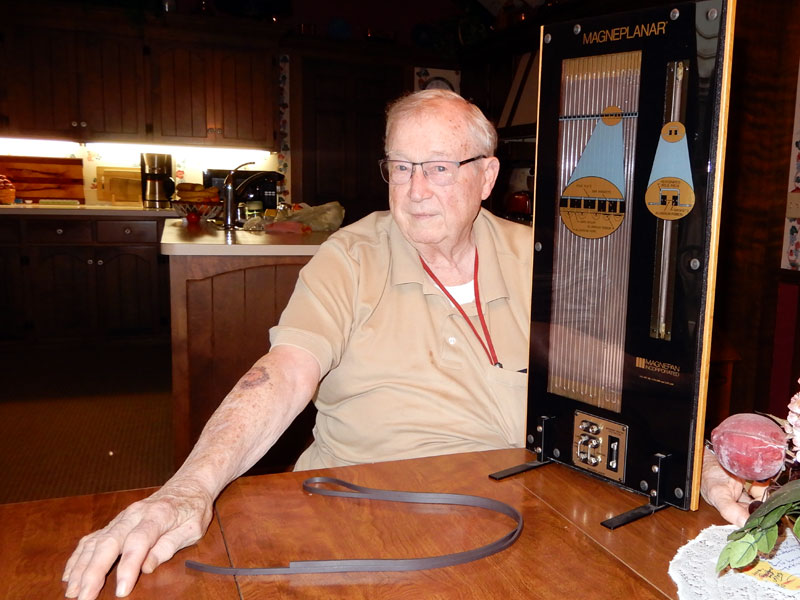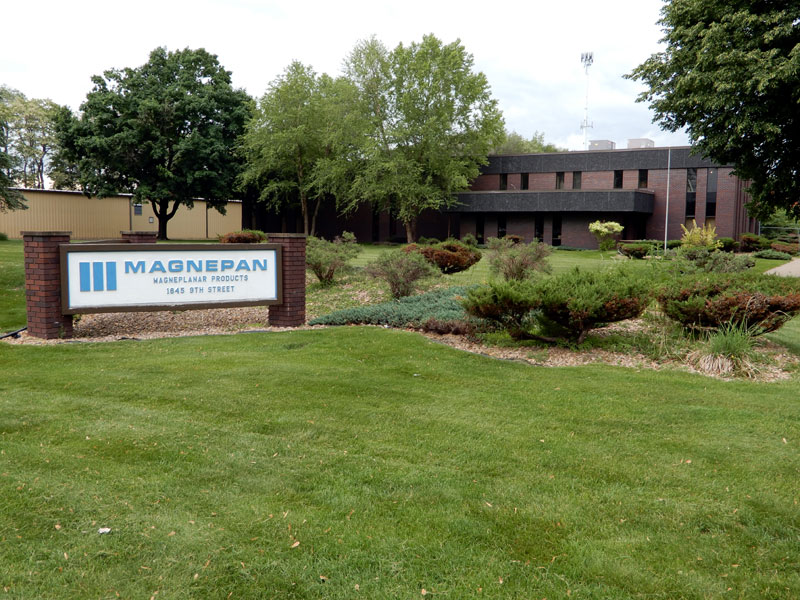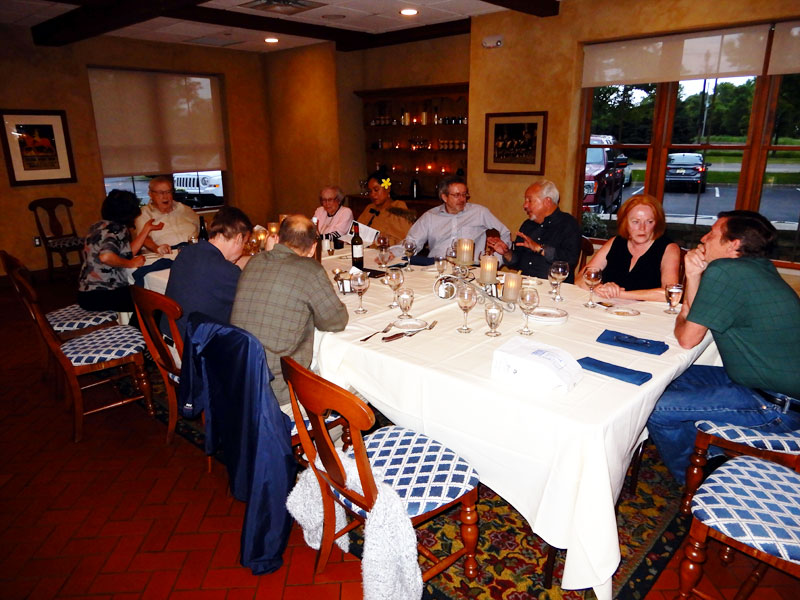Fifty Years of Magnepan
f you’ve been distracted this summer, let me be the first to remind you of two significant historical events that happened exactly fifty years ago. First, mankind put one of our species -- make that two of our species -- on the moon. However, even before that, we humans realized a different kind of impossible dream: to hold a multi-day music festival on a farm in Woodstock, New York, that not only didn’t turn into a freeform fiasco but ended up becoming a cultural milestone. The moon landing was the greater achievement for mankind, but, fifty years later, it would be difficult to displace Woodstock as the more important event for popular music and popular culture. But I’m giving my attention here to another event that occurred during the summer of 1969, an event that was significant for audiophiles -- and continues to be to this today. In June 1969, Jim Winey left his engineering position at 3M in Minneapolis, Minnesota, to found, of all things, a loudspeaker company based around a unique driver technology that he invented. This surely had to cause some immediate second-guessing, given his growing reputation at 3M and his growing family at home. But his idea for a new kind of loudspeaker driver was both so novel and well-founded in existing technology, not to mention sonically consequential, that ignoring it would have been a gargantuan loss to the audiophile community, not to mention to the many people who came to work for his company, some of whom remain to this day or have gone off to continue their careers elsewhere in high-end audio. Magnepan, Winey’s company, became a true pillar of the audio industry -- one that fifty years later is still producing speakers that are the talk of so many audiophiles. But Magnepan’s genesis was by no means a sure thing, even with the uniqueness of the technology upon which the company was founded. While hi-fi was a popular pastime all over the world, the audio industry was still in its infancy in 1969, more oriented toward hobbyists, and the kits they assembled themselves, than finished products. In that climate, getting the word out about a new speaker was difficult, and even more so for a new speaker technology.
But I’m getting ahead of myself. First, a bit about Jim Winey (shown above). He was the proverbial Iowa farm boy whose curiosity and resourcefulness were natural for engineering, a degree in which he received from Iowa State. Winey was also a music lover, hi-fi buff and tinkerer for many years before Magnepan’s inception. His son Mark Winey told me, “He was an audiophile. I have distinct memories of the same song being played over and over” -- the demo material with which he evaluated his audio creations. “He was always building kits and cobbling speakers together.” But not just any speakers. From the beginning, Winey wasn’t following the well-trod road of building dynamic speakers with separate drivers for each frequency range, all mounted in a wooden cabinet. “I do not remember any box speakers in our house,” Mark Winey said. Instead, Jim Winey experimented until he devised and built his driver, which was truly revolutionary. What made it so was the concept behind it. It reimagines the technology of dynamic drivers, using it to drive a panel instead of a cone. Magnepan planar-magnetic speakers -- Magneplanars, as they've come to be known -- are most often compared to electrostatic speakers. The two are alike only in the sense of the panel from which the sound emanates. The drive technology is completely different, and, in the case of Magnepans, requires no separate AC power. From the very beginning, listeners noticed and commented on the speed and lack of boxy colorations of Magnepan speakers, both of which were completely understandable. The planar-magnetic panels were made of mylar and thus incredibly low in mass compared to dynamic cones, which at that time were made of a heavy doped paper. The lack of similar mass imparted that sense of speed. Of course, Magnepan speakers had no cabinets, so there was no source of boxy colorations. The purity of the sound of Magnepan speakers was a distinct sonic advantage, and it remains so to this day. Starting a business requires capital, and Jim Winey raised it the old-fashioned way: by asking friends and family, thirty of whom funded Magnepan’s launch. Winey used a prototype speaker he built himself to help convince them all, each of whom was paid back “several times over,” according to him, for their initial investment. Magnepan’s first home was in an industrial part of White Bear Lake, a northeastern suburb of Minneapolis, sharing a building with an auto-repair shop. Through shrewd business decisions, the most important of which was handing distribution of Magnepan speakers over to William Z. Johnson, who had launched Audio Research around the same time and was more prominent in the audio industry, Magnepan grew, first buying out the repair shop’s space, then, less than ten years after the company’s launch, constructing the building that is its current home.
During the late 1970s and throughout the 1980s, Magnepan was wildly successful. "My timing was very good," Jim Winey said. Much of the company's growth boiled down to the consistency of Magnepan's philosophy for pricing its products, which begins with the cost to manufacture and adds "a reasonable profit," according to Winey. There were many months during that stretch of time when Magnepan was building and shipping over a thousand pairs of speakers, which created huge cash flow -- up to $100,000 a month. In total, over the course of its fifty years in business, Magnepan has shipped "way over 200,000 pairs of speakers," according to Winey. They are the only esoteric high-end speakers I've seen in thrift stores, and the company still refurbishes most models produced, including the multi-panel Tympani-series speakers, which audiophiles continue to prize. Jim Winey also designed the first large-scale ribbon tweeter, a driver the company still uses in its upper-end models, and he reminded me of another of his designs: "You are aware that we used to manufacture a tonearm, right?" That would be the Magnepan Unitrac, which sold for $299. Winey believed that the weak link in the analog-playback chain was the tonearm, so he decided to do something about it and design his own. "We sold just over 10,000 of them," he told me. I'm hoping to find one, still in the box, in a thrift store. The challenges of selling high-end speakers have changed and increased since the 1980s. Mark Winey, Magnepan's current CEO, told me that he spends $70,000 a year on insurance, "just to keep the doors open." There are more things to occupy people's time, and they have cut in to high-end audio's market. Sales and distribution have changed, with so many brick-and-mortar dealers closing and so many audio products sold factory direct. Throughout this upheaval, Magnepan has stayed true to its way of doing business. New Magnepan speakers often seem ridiculously low in price, the product of that longstanding and unchanging pricing philosophy, and the company continues to doggedly support its network of dealers, most recently with a tour of all in North America to demonstrate the flagship 30.7 ($30,000 per pair), an old-school approach for the new millennium.
After I talked at length with Mark and Jim Winey, they, along with their spouses and Magnepan employees past and present, attended a dinner to mark the company's half-century in business. This was the extent of the celebration. There were no special commemorative speakers, no extravagant party, just the Magnepan principals reminiscing about the company's creation and its good old days, the sort of conversation that appeals to sentimental fools like me. One interesting point that Wendell Diller, the company's longtime marketing manager, made stuck with me: "This is a family business. We're a family. If it weren't this way, I wouldn't have stayed here for so long" -- 46 years in Wendell's case. This reminded me of the fable about the bundle of sticks: one stick is easy to break, but a bundle of sticks is not. That bundle is family. |



